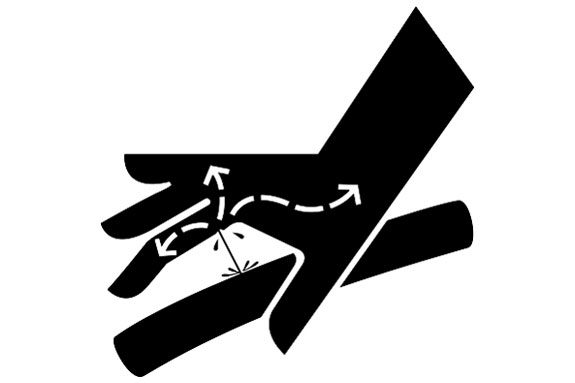Most equipment used in dairy production – including milking and feeding machines, tractors, skid loaders, tillers, bale choppers and even manure digesters – contains several hydraulic hose and fitting components. While most pay little attention to the hoses of a hydraulic system until after a failure occurs, being proactive about proper safety and maintenance precautions can ultimately save dairy producers costly equipment downtime and the obvious effects – and legalities – of potentially lethal injection injuries.
Before you spec it, “S.T.A.M.P.” it
One consideration for extending the service life and safety of dairy and forage equipment is ensuring proper hydraulic hose selection and installation.
Using the “S.T.A.M.P.” process (Size, Temperature, Application, Media, Pressure) helps farmers to simplify hose assembly component selection while further helping to avoid the risks of contamination and inefficient machine operation.
Size: The measure of a hose’s inside diameter (ID) – a universal industry designation used to identify the size of a hydraulic hose or fitting. This identifier is found on the hose layline or stamped on a fitting. Choosing parts with the correct ID is important for maintaining proper system flow velocity.
Temperature: Ambient temperature measures the temperature of the environment in which the hose is used. System temperature is the temperature of the media being conveyed.
Unusually high or low ambient temperatures can have adverse effects on hoses not designed for such conditions. The integrity of the hose cover and reinforcement materials can be compromised, reducing the service life of the hose.
Application: For maximum service life and safety, a hose assembly should be routed so that the hose is not stretched, compressed or kinked. Allow for a minimum straight length of twice the hose’s outside diameter between the end of the fitting and the point at which the bend starts.
Also, it’s important to know the industry standards and requirements concerning hose construction type, size, tolerances, working pressure and impulse cycles for the application.
Media: The inner tube, cover and fittings of a hose assembly must be compatible with the media being conveyed. Extreme high or low media temperatures can sometimes have a negative impact on hose materials. Rubber, for example, loses flexibility if subjected to high temperatures for extended periods of time.
Tip: To help prevent damage resulting from media temperatures that are too low, or too high, hoses are designated with temperature ratings for different types of fluids. Look for this information on the hose layline.
Pressure: It is critical to know both the system working pressure and the pressure of any surges or spikes in the system. The published maximum working pressure of the hose (see layline) must be greater than the pressure the system can surge to.
Hydraulic fluid injection injuries
Hydraulic fluids contain a wide range of chemical compounds that are highly toxic within the bloodstream. Fluid injection injuries can result in tissue damage, amputation and – in the worst of cases – even death.
Advance planning for prevention and treatment is critical. Should an injury occur, there is no time for preparation – it has already passed.
Fluids in high-pressure applications can escape from pinhole leaks in hoses caused by a number of factors, including age, incompatible fluids, hose twist and minimum bend-radius violations. The safest, highest-quality hydraulic hose assemblies are made with the correct components from the same manufacturer.
When improper or incompatible hoses and fittings are combined, the risk of unanticipated problems and costs increases.
Immediate treatment required! Hydraulic fluid can quickly destroy tissue, leading to gangrene and amputation (as occurs in nearly half of all instances). Yet when injured, a person may feel only a slight pricking sensation, and what may appear to be a simple puncture wound in reality is life-threatening.
It is important to note that many doctors are not experienced in treating injection injuries, as the wound often looks harmless and the treatment protocol given is “low” instead of “critical” priority. Plan ahead for proper treatment by locating a practiced caregiver (a hand surgeon is best).

Safety planning is critical
Hydraulic systems should be frequently inspected for any visible signs of wear and tear on a hose, which can serve as possible indicators of a potential leak path or failure. To perform a visual inspection, first shut down the system.
If a system must remain pressurized, or when hoses are routed in hard-to-see locations, use a pole with a piece of cardboard attached to check for leaks.
In cases where an operator may be working close to a hose assembly, using a hose restraint is recommended as an enhanced safety precaution.
Hose restraints, such as the one pictured, limit the whip or “travel” of the pressurized hose should it happen to break free from its fitting – preventing harm to the operator and damage to the equipment while curtailing downtime.
While most pay little attention to the hoses of a hydraulic system until a failure occurs, it is important to be proactive about hydraulic hose safety and maintenance to avoid costly downtime and – potentially lethal – injury. PD
—Submitted by Parker Hannifin Corporation’s hose products division, a unit of its Fluid Connectors Group. For more information visit, www.parkerhose.com




